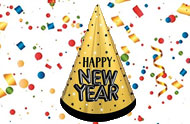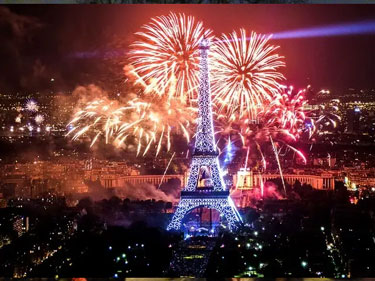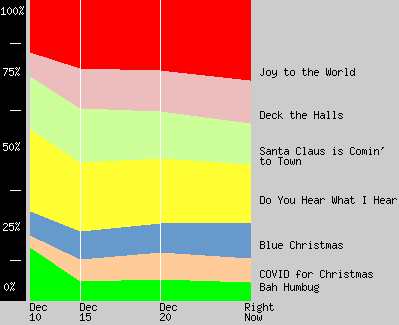 |
 |
 |
 |
- Christmas Weblog
- Christmas Past
Christmas '20
 Christmas '19
Christmas '18
Christmas '17
Christmas '16
Christmas '15
Christmas '14
Christmas '13
Christmas '12
Christmas '11
Christmas '10
Christmas '09
Christmas '08
Christmas '07
Christmas '06
Christmas '05
Christmas '04
Christmas '03
Christmas '02
Christmas '01
Christmas '00
Christmas '99
Christmas '19
Christmas '18
Christmas '17
Christmas '16
Christmas '15
Christmas '14
Christmas '13
Christmas '12
Christmas '11
Christmas '10
Christmas '09
Christmas '08
Christmas '07
Christmas '06
Christmas '05
Christmas '04
Christmas '03
Christmas '02
Christmas '01
Christmas '00
Christmas '99
- Christmas Present
- Christmas Yet to Come
§January 1 has been celebrated as a holiday by Western nations for only about 400 years. The earliest record of New Year’s observance comes from Mesopotamia circa 2000 B.C., but that was celebrated around the vernal equinox in mid-March. The Egyptians, Phoenicians and Persians began their new year with the fall equinox. The Greeks celebrated on the winter solstice.

§ The first time New Year’s was ever celebrated on January 1 was in 153 B.C. in Rome. The month of January didn't even exist until around 700 B.C.
§ In 1582, Pope Gregory XIII introduced his Gregorian calendar. At the time, Europe adhered to the Julian calendar implemented by Julius Caesar in 46 B.C. The Roman system miscalculated the length of the solar year by 11 minutes, and had fallen out of sync with the seasons over time. Which meant that Easter, traditionally observed on March 21, was falling farther away from the spring equinox each year, a situation unacceptable to the Church.
§ Even the Gregorian calendar is off by 26 seconds and by the year 4909 should be a full day ahead of the solar year.

§ Catholic countries, including Spain, Portugal and Italy, swiftly adopted the Gregorian calendar. European Protestants, however, largely rejected it, fearing it was a Catholic plot against them. Protestant Germany switched over in 1700. England in 1752. In Orthodox countries the national churches have never embraced Gregory’s reforms.
§ The Pacific island of Tonga is the first place to ring in the New Year, at 10am GMT on December 31. Howland and Baker Islands are the last, at 12pm GMT on January 1. But they are uninhabited. Second to last is American Samoa at 11am GMT. It is 558 miles from Tonga, so theoretically you could catch a quick flight between those two locations and count down to 2021 twice. But local Samoans and visitors are more inclined to stay put and just start celebrating a full 25 hours before.
§ The largest (and possibly wildest) New Year's party site would be Rio de Janeiro, where Copacabana Beach plays host to more than 2 million cariocas (Rio natives) who congregate on the beach wearing stark white attire. They fill a 2 1/2-mile stretch of sand. Other happening venues include New York City (Times Square), Las Vegas (fireworks over the Strip), London (fireworks above the Thames waterfront), Paris (fireworks over—and through— the framework of The Eiffel Tower), Madrid (Puerta del Sol plaza) and Sydney, Australia (fireworks over the Sydney Harbour Bridge). Japan probably as well (both times).
 Twelfth Annual Skelly Family Christmas Video
Twelfth Annual Skelly Family Christmas Video§ New York's Times Square Ball Drop defines the evening for an estimated one billion-plus people around the globe who watch on television. It descends down a pole to the top of the former New York Times Building, for which the square is named. The New York tradition is more than 100 years old.

§ The ten best New Year's Eve travel destinations in the United States according to Busbud, a travel website specializing in intercity bus tickets, are the following:
- Best Countdown – New York City, New York
- Best fireworks – Las Vegas, Nevada
- Best great outdoors celebration – Lake Tahoe, California
- Best family-friendly celebration – Walt Disney World, Florida
- Best parties – New Orleans, Louisiana
- Best foodie destination – Los Angeles, California
- Best music – Nashville, Tennessee
- Best beach celebration – Miami, Florida
- Best quiet and romantic celebration – Cape Cod, Massachusetts
And New Year and Old Year met,
And winds were roaring and blowing;
And I said, 'O years, that meet in tears,
Have you aught that is worth the knowing?
Science enough and exploring,
Wanderers coming and going,
Matter enough for deploring,
But aught that is worth the knowing?
Seas at my feet were flowing,
Waves on the shingle pouring,
Old year roaring and blowing,
And New Year blowing and roaring.
Alfred, Lord Tennyson

2020 Index:
Dec. 10-2.86 Dec. 15-3.09 Dec. 20-3.22 Dec. 25-3.33 2021 Index: Dec. 10 - 3.18 Dec. 15 - 3.63 Dec. 20 - 3.64 Dec. 25 - 3.76 |
Season Stats ...
2020 Christmas Spirit breakdown:
12/10/21:
A little slower a start than expected, but recovering nicely. One gets the sense you people might be ready to party this year. A word to the wise: after a couple of drinks you might be able to talk a little smack about religion this year, but for the love of God, stay away from politics.
12/15/21:
We built up a good head of steam over the last five days, but seem to be letting off a little of it today. Index actually dropped slightly, both qualitatively and quantitatively. Still a good number on an historical basis. Next year we're going to sell options on this thing.
12/20/21:
This year's Christmas Spirit Index appears to be topping out around 3.60. A fairly good top. Certainly better than last year, even though it's slipping some since Dec. 20. Could be COVID jitters. The top score ("Joy to the World") in past good years was often closer to 50% of total votes than its current 25%. But top-three scores combined are over 50%, which is respectable. Also, bottom two scores combined are less than 15%, a positive sign. Let's see what Christmas Day brings, beyond that is, presents under the tree.
12/25/21:
Leo Tolstoy wrote, "All happy families are alike; each unhappy family is unhappy in its own way." (Anna Karenina, 1878.) Let it also be said of this year's Christmas Spirit index. COVID and Humbug stayed basically flat, dropping just fractionally, while Blue Christmas sentiment increased. Others stayed basically flat. But the bells are still ringing joyously in Joy to the Worldville, which pushed the overall index just over the 3.75 mark. It's still good to be the king.
|